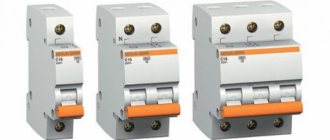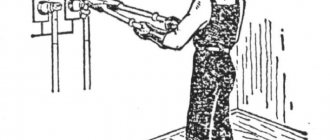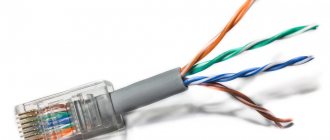Even a person who has a vague understanding of construction understands that concrete or brick cannot be taken with an ordinary drill. For this you need special devices - diamond crowns. For their work, hammer drills, drills or diamond installations are used. The crowns will quickly and quietly make a smooth hole in the wall without nicks or chips. At the same time, they leave almost no fragments of stone and dust behind them. The price of diamond crowns cannot be called low, but it is justified by the quality of work and almost eternal service life.
TOP 16 best diamond crowns for socket boxes
| Photo | Name | Rating | Price | |||
| The best diamond crowns for premium socket boxes | ||||||
| #1 | PRACTICE 917-293 162 mm | ⭐ 5 / 5 1 - voice | Find out the price | |||
| #2 | HILTI SPX-L DIAMOND FOR CONCRETE X-CHANGE 82 MM | ⭐ 4.95 / 5 4 - votes | Find out the price | |||
| #3 | Dr. Schulze DS-LB Premium 82 mm | ⭐ 4.9 / 5 6 — votes | Find out the price | |||
| #4 | Crown Messer 06-20-082 82 mm | ⭐ 4.85 / 5 3 - votes | Find out the price | |||
| The best budget diamond drill bits for socket boxes | ||||||
| #1 | Wolverine 500068 68mm | ⭐ 5 / 5 1 - voice | Find out the price | |||
| #2 | Bison29865-73 73 mm | ⭐ 4.95 / 5 5 — votes | Find out the price | |||
| #3 | d28 KURS | ⭐ 4.9 / 5 | Find out the price | |||
| #4 | HRD150 42x150 mm, M16 Niborit v1007 | ⭐ 4.85 / 5 1 - voice | Find out the price | |||
| The best diamond bits for socket boxes in terms of performance | ||||||
| #1 | Diamond bit (102/150 mm M16) KEOS DC102.150 | ⭐ 5 / 5 1 - voice | Find out the price | |||
| #2 | Crown (68/70 mm M16) KEOS DC068.70 | ⭐ 4.95 / 5 7 — votes | Find out the price | |||
| #3 | New Formula 68 mm TRIO-DIAMOND NF068 | ⭐ 4.9 / 5 7 — votes | Find out the price | |||
| #4 | Diamond bit for concrete Hilberg Laser (68 mm) TRIO-DIAMOND | ⭐ 4.85 / 5 4 - votes | Find out the price | |||
| #5 | Diamond bit for concrete (80 mm) TRIO-DIAMOND GC788 | ⭐ 4.8 / 5 2 - votes | Find out the price | |||
| #6 | DIAM 311103 M16-SDS+ (82x70 mm) | ⭐ 4.75 / 5 5 — votes | Find out the price | |||
| #7 | Diamond bit for concrete (68x70 mm M16/HEX12) Diam 311116 | ⭐ 4.7 / 5 4 - votes | Find out the price | |||
| #8 | Diamond bit (68 mm SDSplus/M16) Enkor 48280 | ⭐ 4.65 / 5 3 - votes | Find out the price | |||
Which crown would you choose or recommend for drilling socket boxes?
Take the survey
Criterias of choice
The following criteria will help you choose a suitable diamond crown.
Manufacturer
Tools made by well-known manufacturers are popular. Their products are distinguished by high productivity, durability, and long service life. When choosing crowns, experts recommend paying attention to the following brands:
- Super Hard;
- Trio Diamond;
- FIT;
- Di-Star;
- Vira;
- Strong.
Type
Equipment for making holes according to the type of design comes in the following variants.
Crown . This is a core drill or a hollow cylinder equipped with a cutting part. It is performed in the form of a ring or individual segments.
Adapter for crowns . This is a device that acts as an extension cord. It is used to connect the power tool and the crown. When choosing it, you should take into account information about the nozzle holder and the equipment providing the driving force.
Centering drill . Externally, the device bears little resemblance to a regular drill. Its purpose is to set the alignment when making holes of large diameters (using a crown). Some crowns are equipped with this item, which facilitates the installation process.
Crown diameter
This parameter corresponds to the size of the hole being made. It is measured in millimeters. Options for running diameters of equipment: 32; 35; 68; 70; 76; 82 mm.
| Diameter, mm | Application |
| 52-58 | hole for internet cable |
| 68-82 | channel for socket boxes |
| more than 82 | technical holes in stone, asphalt, concrete |
Crowns with diameters from 18 to 200 mm are available for sale.
Cutting part coating material
Different materials are used to make the cutting part of the crown. Based on this, the following execution options are determined:
- diamond;
- carbide;
- carbide;
- bimetallic.
What can be processed
When considering a particular diamond bit, you should make sure that it is capable of working with the type of materials that you plan to drill. Crowns are produced designed for working with ceramics, stone, wood, and concrete. Some models are able to overcome different types of ground. Please note that wood or building block attachments cannot cut reinforced concrete or hard stone.
The purpose of the nozzles is determined taking into account the hardness and other physical properties of the material from which they are made.
What kind of drilling
There are two main drilling methods: wet and dry.
In the first case, liquid supply is provided (manually or using automation). Water acts as a cooler and removes debris from the crown cavity. This type of drilling is characterized by high productivity. It is used mainly in industry.
The dry method is applicable for some types of materials when drilling structures that have low resistance to moisture. The method is also used when the water source is remote.
Maximum drilling depth, mm
This parameter depends on the total length of the nozzle, which consists of a working part corresponding to the maximum drilling depth and a fragment for the shank (about 1-2 cm). Indicators of 400-450 mm are considered standard. The maximum value of 2250 is for custom-made equipment.
Crowns for domestic needs can make holes with a depth of 5 to 150 mm.
Impact crown or not
When choosing a crown, it is important to clarify whether the equipment is impact or not. This determines whether the attachment can be used with an impact drill or hammer drill in impact drilling mode.
How to choose the right high-quality and reliable diamond crown for socket boxes
Construction stores and markets now offer a huge number of diamond bits from different brands, to suit a variety of preferences and any budget. Most people, when choosing a diamond crown, take into account, of course, the price. But first of all you should pay attention to:
- internal thread;
- size of the socket box;
- what materials to work with;
- what holes are you planning to drill?
Video - Test and comparison of diamond drill bits for socket boxes
It is better to give preference to diamond bits from trusted brands. For the democratic segment, these are the companies Zubr, Wolverine, Praktika, Diam. If you need a more powerful device for professional drilling of durable reinforced coatings, you should consider Bosh, Makita, Hilti.
Scope of application
A diamond bit is an accessory for a power tool, with the help of which it is possible to make a hole in the plane of the working surface. The nozzle device includes:
- connecting element;
- cover;
- trunk;
- segment.
Thanks to the presence of diamond segments, which, under the influence of a power tool, come into a circular motion, concrete or brick is sampled in an area strictly designated by the parameters of the crown. The rate of formation of the depression depends, among other things, on the force of pressure.
Diamond segments are used as cutting elements. There may be several of them. A design in the form of a ring with diamond coating is also produced.
Equipment is available in different diameters. A certain size is suitable for each type of work. When choosing a crown, it is important to pay attention to the type of shank. It must match the chuck of the power tool.
Diamond bits are used in repair and construction work and public utilities. With its help, the installation of socket boxes is carried out. Other work performed using a crown includes:
- laying communication pipes;
- arrangement of distribution boxes;
- making technical holes in porcelain stoneware finishes and ceramic tiles;
- drilling of metals, cement mortar;
- making holes for dowels;
- drilling limestone, building blocks, sandstone;
- connection of utility networks to the central highway.
Geological surveys are carried out using drilling tools. One of the consumables is a diamond crown. With its help, a well is laid and rock is taken for further research. This type of crown has a certain thickness of diamond coating, corresponding to the density of the natural mineral.
When using diamond equipment, there is no destruction of concrete structures, which is due to the lack of impact force.
Voting for the best crown for drilling socket boxes
Which crown would you choose or recommend for drilling socket boxes?
PRACTICE 917-293 162 mm
1.85 % ( 1 )
HILTI SPX-L DIAMOND FOR CONCRETE X-CHANGE 82 MM
7.41 % ( 4 )
Dr. Schulze DS-LB Premium 82 mm
11.11 % ( 6 )
Crown Messer 06-20-082 82 mm
5.56 % ( 3 )
Wolverine 500068 68mm
1.85 % ( 1 )
Bison29865-73 73 mm
9.26 % ( 5 )
d28 KURS
0.00 % ( 0 )
HRD150 42x150 mm, M16 Niborit v1007
1.85 % ( 1 )
Diamond bit (102/150 mm M16) KEOS DC102.150
1.85 % ( 1 )
Crown (68/70 mm M16) KEOS DC068.70
12.96 % ( 7 )
New Formula 68 mm TRIO-DIAMOND NF068
12.96 % ( 7 )
Diamond bit for concrete Hilberg Laser (68 mm) TRIO-DIAMOND
7.41 % ( 4 )
Diamond bit for concrete (80 mm) TRIO-DIAMOND GC788
3.70 % ( 2 )
DIAM 311103 M16-SDS+ (82x70 mm)
9.26 % ( 5 )
Diamond bit for concrete (68x70 mm M16/HEX12) Diam 311116
7.41 % ( 4 )
Installing mounting boxes in walls
How to properly install a socket in drywall
Before drilling holes in the wall, mark their centers with a marker, colored pencil or chalk. When installing several boxes in one row, a horizontal or vertical line is drawn using a level or plumb line, respectively. The distance between the centers of the boxes on it is 71 mm. There are two ways to cut a hole: with a tapped crown or a drill.
Reference. Holes in plasterboard partitions are cut not only with a crown, but also with a knife, a thin saw and a wood drill. Hole diameter – 68 mm.
How to cut a hole with a crown
The easiest and fastest way is to use a crown for a rosette in concrete with a diameter of 68 mm and a hammer drill:
- secure the tool in the hammer drill;
- enable the “impact+rotation” mode;
- set the centering drill to the hole center mark;
- drill the wall to the depth of the socket box;
- change the tool to a peak or chisel;
- enable “kick only” mode;
- knock out the remaining material from the hole;
- when installing boxes in one row, cut out the partitions between them with a wall cutter or with a hammer drill;
- cut holes in the boxes for cable entry;
- fix the boxes in the holes with alabaster or putty.
Installation of socket boxes
Attention! In concrete walls, it is advisable to use only a hammer drill, but in brick and alabaster walls, you can use an impact drill with a power of at least 800 W.
Hole with carbide-tipped drill
In the absence of a special tool, the recess is drilled with a carbide-tipped drill:
- The mounting box is applied to the wall at the installation site and traced along the contour with a pencil or scriber;
- holes are drilled along the line to a depth of 55 mm;
- the material remaining inside the hole is cut out or drilled out;
- Holes are cut in the box for cable entry, and it is fixed in the hole.
Important! If the putty covers the cable holes and gets inside the box, it should be removed BEFORE it dries completely.
Prices
If you want to make just a couple of holes, you can buy Chinese products. You can distinguish it by the lowest price. Some believe that Chinese crowns for socket boxes are not as bad as they seem, and they simply do not know how to work with them. But the point is not the ability to work, but the low quality of the metal itself - it is not made from ore, but from melted down old rusty metal. If you need a lot of holes, it makes sense to buy American products, but European ones (in particular, German ones) will work better (and longer). Russian goods are also represented on the market; their quality is slightly better than China’s, but they are significantly inferior, for example, to American ones, but are slightly ahead of China. Solid-state Chinese ones will cost about 200–300 rubles. a piece. The price tag for professional diamond-coated products starts from 1 thousand rubles. and reaches 12 thousand rubles. The price mainly depends on the diameter and length.
Varieties
Cutting any tile is quite difficult if you don't know which tool to choose. On the Russian market, experts identify the two most common and sought-after types of crowns. This is a diamond-coated nozzle with tungsten carbide coating.
Let's look at each type in more detail, learn about their areas of application, advantages and disadvantages:
Diamond coated crowns
This type has a coating of diamond chips along the edge, which is in contact with the working surface. This composition is highly durable and allows for better processing of hard tile surfaces. The industry produces diamond-coated crowns of various diameters: from 10 mm and more. They are often sold in sets of several pieces of varying sizes.
To work with such a part, you can use a regular drill, but in this case the holes often turn out uneven, and the edges need to be refined. So the best option would be to use a stationary machine, provided it is cooled with water. In addition, to achieve the best result, the tool operates at low speeds, and the cutters are fixed using special attachments. They allow you to securely fasten the crown in the proper place.
Of course, working with such tools requires some experience. However, if you glue paper adhesive tape to the work surface, the crown will not slide off the smooth surface. In general, diamond-coated crowns are considered the most reliable and effective, especially for ceramic tiles. The only drawback is their cost, which is higher than other types.
Tungsten carbide coated crowns
Designs of this type are distinguished by the presence of a centering carbide drill, which allows the use of a simple electric drill. More often than others, this type is sold in a set of three or four nozzles of different diameters with one base.
Unlike a diamond-coated drill, a tungsten carbide-coated product is generally cheaper. Prices also depend on the diameter - the larger the size, the more expensive any type of crown. Another advantage is that there is no need for constant liquid cooling. But, like the other type, it requires the use of a drill speed below 500 rpm.
Varieties
In order to find out how to choose a set of crowns, it is worth understanding their variety.
In the photo of a set of bits you can see a section on the surface of a steel pipe. The fastening process takes place using a hammer drill chuck with grooves - clamps. They comply with the SDS standard.
There are different options for nozzles. It all depends on the purpose of use, in particular, on the material used. Criteria such as the type of fastening are also important. The diameter of the holes is important;
The following main types of crowns are made for concrete:
Tooth type crowns
The most suitable option for impact drilling will be gear-type drill bits. The material they are made of is quite durable, made of hard alloys. Shanks are suitable for attaching tool chucks.
Note! This type of crown is best used in spaces between bricks or slabs.
Diamond crowns
It is worth using diamond core bits for socket boxes for impactless drilling. This option is considered a more advanced, modern model. Therefore, nozzles are used for hammerless drilling.
In terms of external characteristics, they are smooth and have small cutouts. They are formed by the accumulation of a small dusting of diamond sand and corundum particles.
Comparing this method with the drum method, we can highlight a number of undoubted advantages:
- low dust content;
- high quality characteristics. Holes in solid material are made precisely to suit your needs;
- The tool is quite easy to work with due to low recoil;
- the material being processed is not additionally loaded with impact loads. In the latter version, cracks often appeared because of this;
- low noise level.
Even with metal reinforcement of concrete slabs, crowns cope.
Their diameter is 12-650 mm, which allows you to make a hole approximately 1.5 m deep.
Crowns standard KS
Another option is to use KS standard crowns, which have a diamond coating.
Their peculiarity is that on the cutting edge there are elements that protrude beyond the surface area. Such features are replacing gear bits made of hard alloys.
Their scope of application is huge. Here are a few of them:
- use in rocky soil;
- in slabs;
- use in monoliths.
Among the main advantages of use, a long service life is noted; repairs are not required during the process.
Features when working with reinforced concrete and tiles
Reinforced concrete drills provide drilling of the strongest materials with maximum diameter and depth, which other similar products cannot cope with. It is thanks to this ability that this model received first place in the rating of tools.
Such a part, unlike Pobedit products, is reliable and durable, and if you purchase it for regular construction and repair work, its high price will pay off in a short period of time. Even the presence of reinforcement cast in concrete will not prevent you from equipping a special place for the socket box using a similar attachment.
Ceramic tiles are a rather difficult material to cut and, especially, drill into a certain surface. Until recently, it was almost impossible to drill into tiles without compromising its integrity; however, the advent of diamond parts has simplified this process. Now ceramics can be used for pipe routing, installation of various fasteners for decorative elements, it can be grooved for laying wires, installing sockets and switches in specially equipped socket boxes.
Where are concrete crowns used?
Concrete crowns (CB) are used to perform the following work:
- Installation of utilities: pipelines, electrical networks, communication lines, security and fire alarms, automation;
- Drilling anchors and other fasteners;
- Fastening technological and electrical structures;
- Fixation of building structures for various purposes.
How to make a hole in a tile for a socket
Using plugs to protect against intrusion into an outlet
It is better to cut a hole in the tile before gluing it to the wall, pressing it firmly against the board placed under it. This is done for two reasons:
- It is difficult to lay a wire behind the glued tiles. The exception is when the outlet is located in the top row of tiles;
- Ceramic tiles are fragile, so drilling in them is only possible with a drill in the “rotation without impact” mode, and only plasterboard and alabaster partitions can be drilled in this way.
Therefore, it is necessary to accurately mark the centers of the boxes in the wall and in the tiles, taking into account the gaps between the tiles. In addition to calculations, you can do the following:
- start drilling the tiles;
- after a through hole appears, attach the tile to the installation site;
- make a mark on the wall through it;
- drill a recess to install the mounting box;
- finish cutting the hole in the tile;
- glue the tiles to the wall and install the mounting box.
Or simply cut out a hole of a larger diameter and fill the gaps with putty.
How to make a hole in a tile
Advice. The sockets and switches are square (double sockets are rectangular), so if they are in the corner of the tile, you can use an angle grinder to make a square cut. Subsequently, it will be closed with a decorative lid.
Knowing how to correctly cut a slot for an outlet and what tool to use is necessary when installing electrical wiring.











